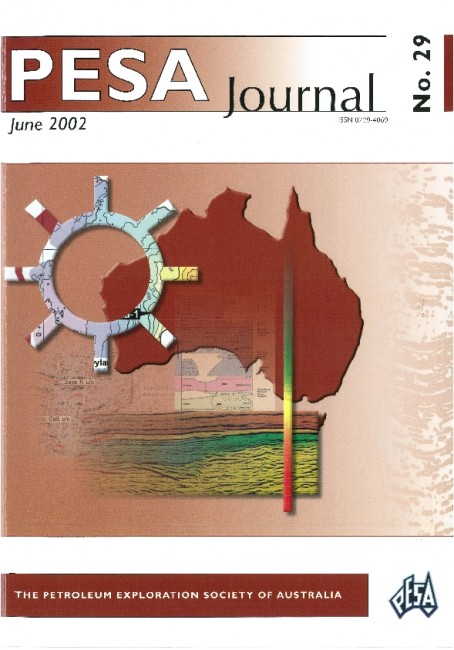Publication Name: PESA Journal No. 29
Authors: M. Rauch-Davies and P. Woods
Publication Volume: 29
Date Published: June 2002
Number of Pages: 6
Reference Type: Journal Article
Abstract:
The Cape Ford-1 well, located in the Bonaparte Basin, BlockWA-128-P, offshore Western Australia , was dri lied during 1997.
A comprehensive AVO, synthetic modelling and acoustic
impedance inversion study was undertaken before dri lling. The
input for inversion was a CDP stack generated from preserved
amplitude processed gathers, time horizons of relevant
reflectors, and a low-frequency velocity trend derived from offset
well data.
The nearby Turtle-2 well, drilled in 1989, intersected oil-bearing
sands at the Tanmurra and Milligan formations. However, the
sands possessed low porosity of around 12% and associated
poor permeablility. Synthetic 1 D AVO modelling was performed
using the logs of Turtle-2, together with lithology to calculate
synthetic shear sonic data. The shear sonic, compressional sonic
and density data were then input into a modelling package and
a synthetic CDP gather was calculated. This gather contained the
same number of traces and the same offset distribution as the
seismic gather at the well location. The AVO behaviour of the
hydrocarbon bearing sands in the Tanmurra and Milligan
formations were subsequently analyzed. As next step, a
substitution model was generated with oil in the pore space
replaced with water. Agairi the AVO response was analysed. The
results of this study indicated the possibility to differentiate
between hydrocarbon and brine sands from the seismic AVO
response.
The modelling also indicated that by increasing the porosity and
putting oil into the pore space, the acoustic impedance
decreased substantially. This was used as evidence that an
inversion should help predict the porosity of the sand.
Furthermore, it was assumed that the acoustic impedance data,
in conjunction with the AVO response, should help predicting
the fluid content.
Cape Ford-1 was drilled to test the low acoustic impedance
anomaly adjacent to, and downdip of, the Turtle-2 well. The
anomaly was interpreted as evidence of improved reservoir
quality. Cape Ford-1 did intersect oi l bearing sands with a
porosity of around 12%. The predicted porosity was in the order
of 24%. A post mortem was performed using the logs of the
Turtle-2 and the Cape Ford-1 well and the seismic data at both
well locations. The results indicate that the amplitude increased more along the offsets at the well location of Cape Ford-1. This
resulted in a stronger stack response. The log data utilised for the
porosity prediction represent the zero offset response. The
difference between the zero offset trace and the stack trace was
very small atTurtle-2. However, because of the larger increase in
amplitude with offset, the difference between these two
attributes was substantial at Cape Ford-1. Therefore, the porosity
prediction resulting from this stack was contaminated by the
stronger AVO response. In the case of a strong increase in
amplitude with offset, it is highly recommended to perform an
elastic impedance instead of an acoustic impedance study.


